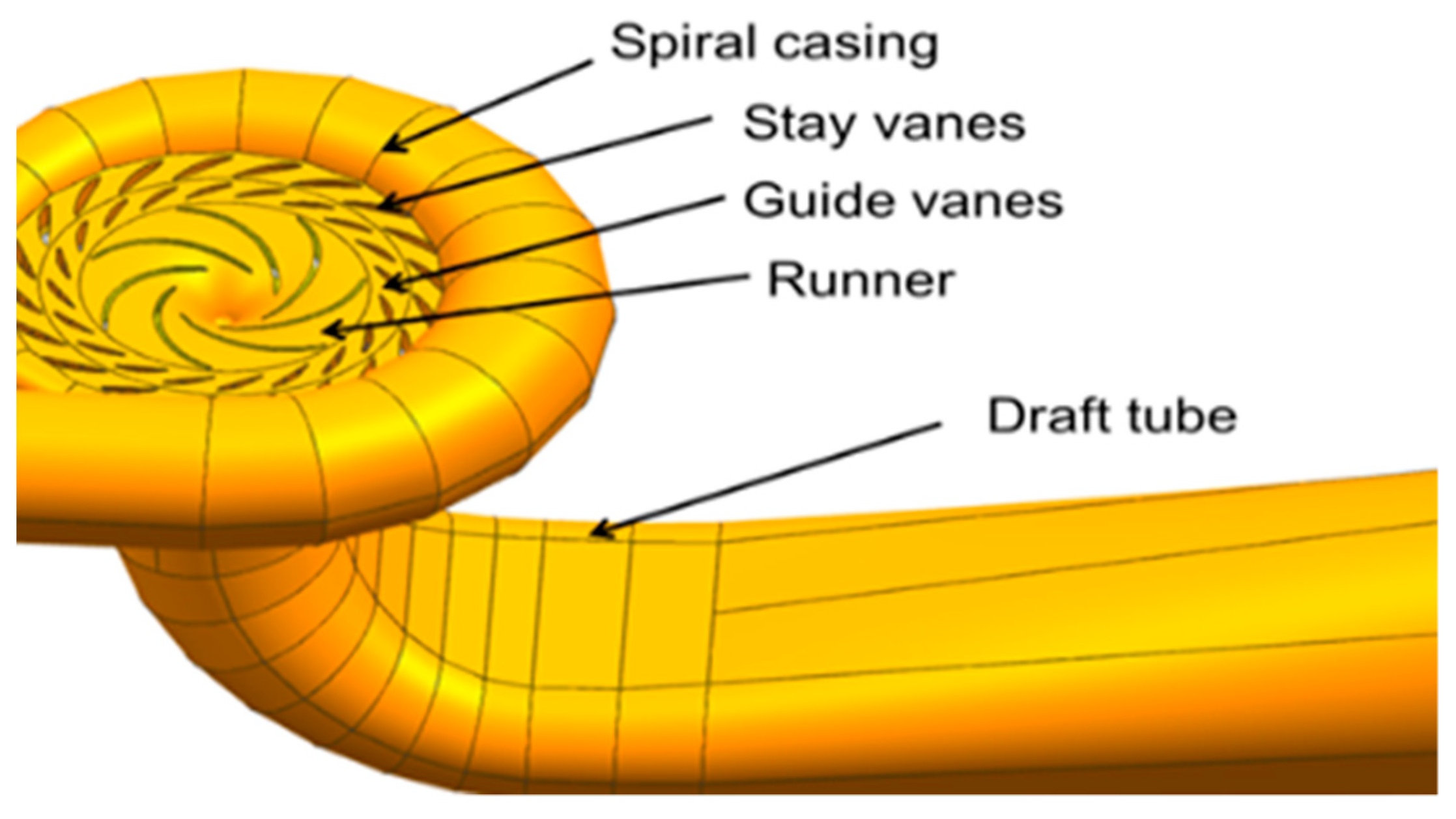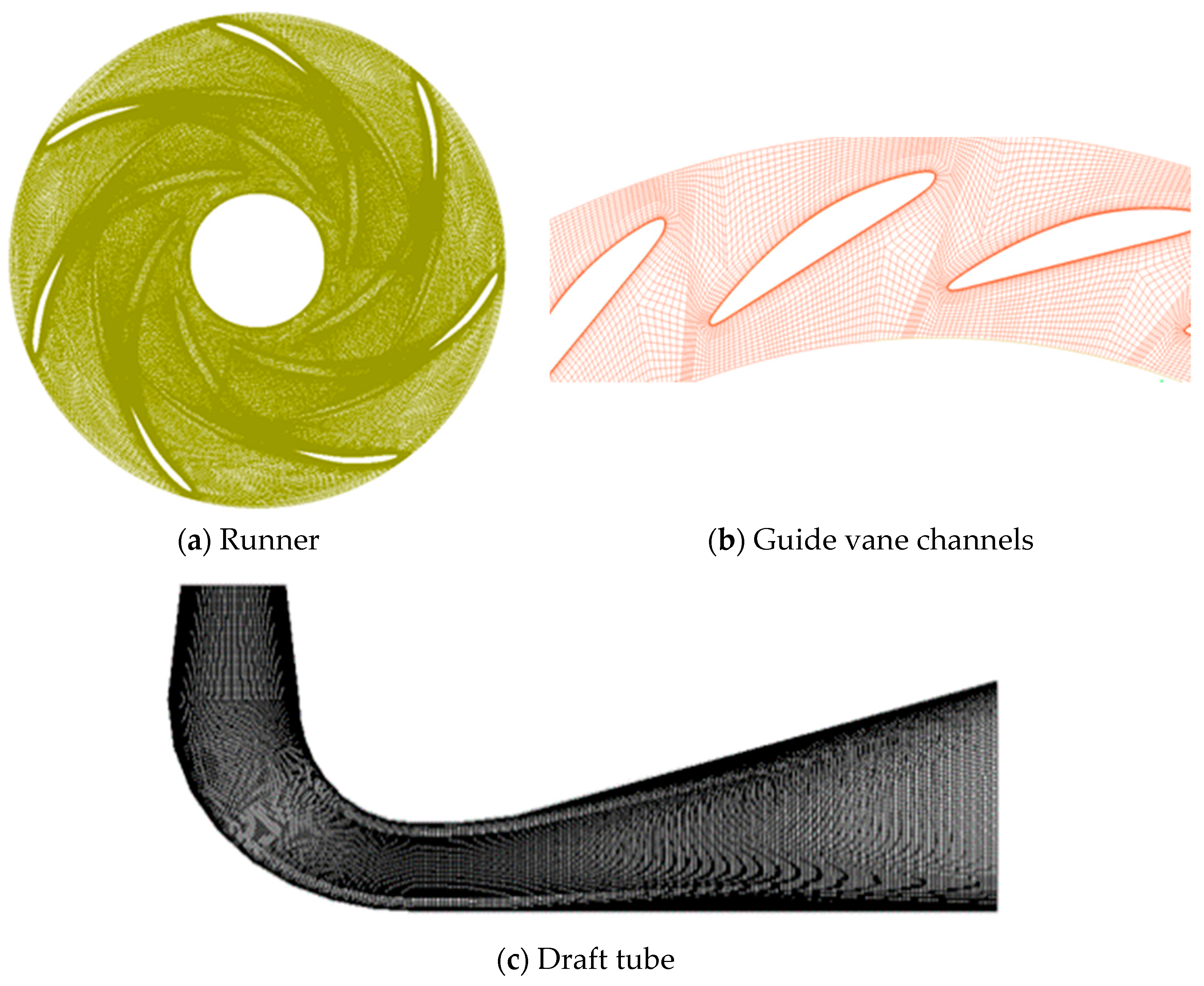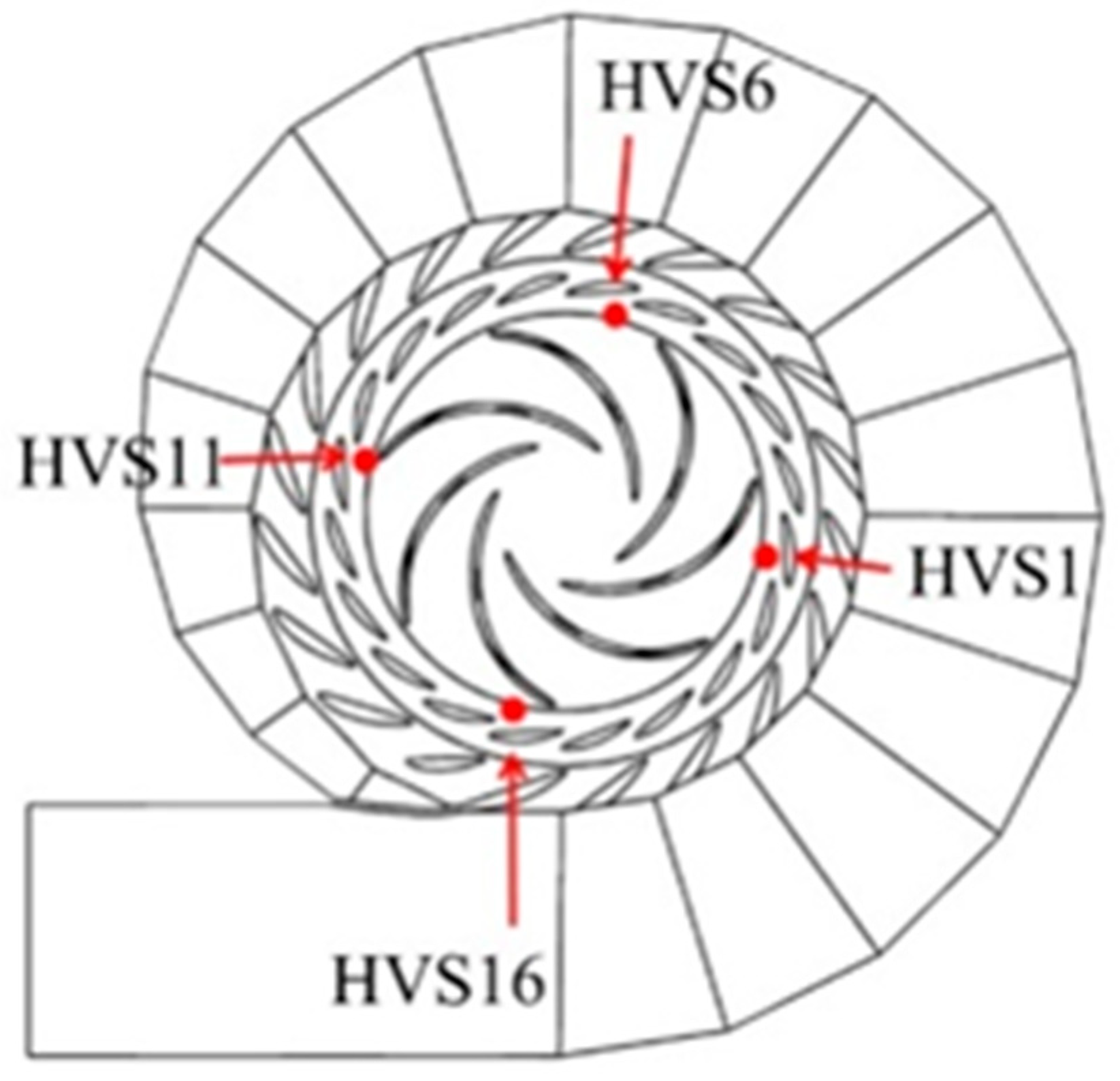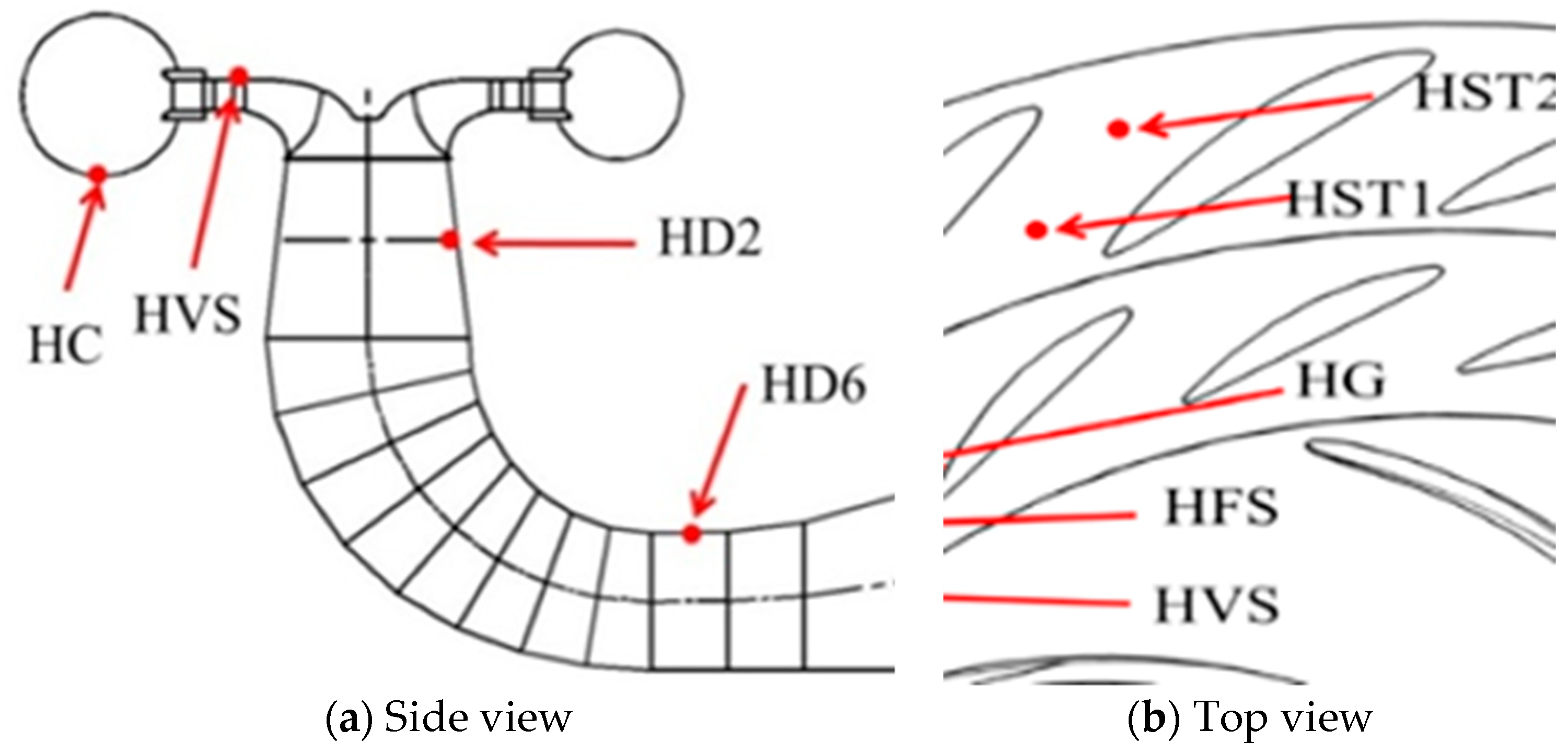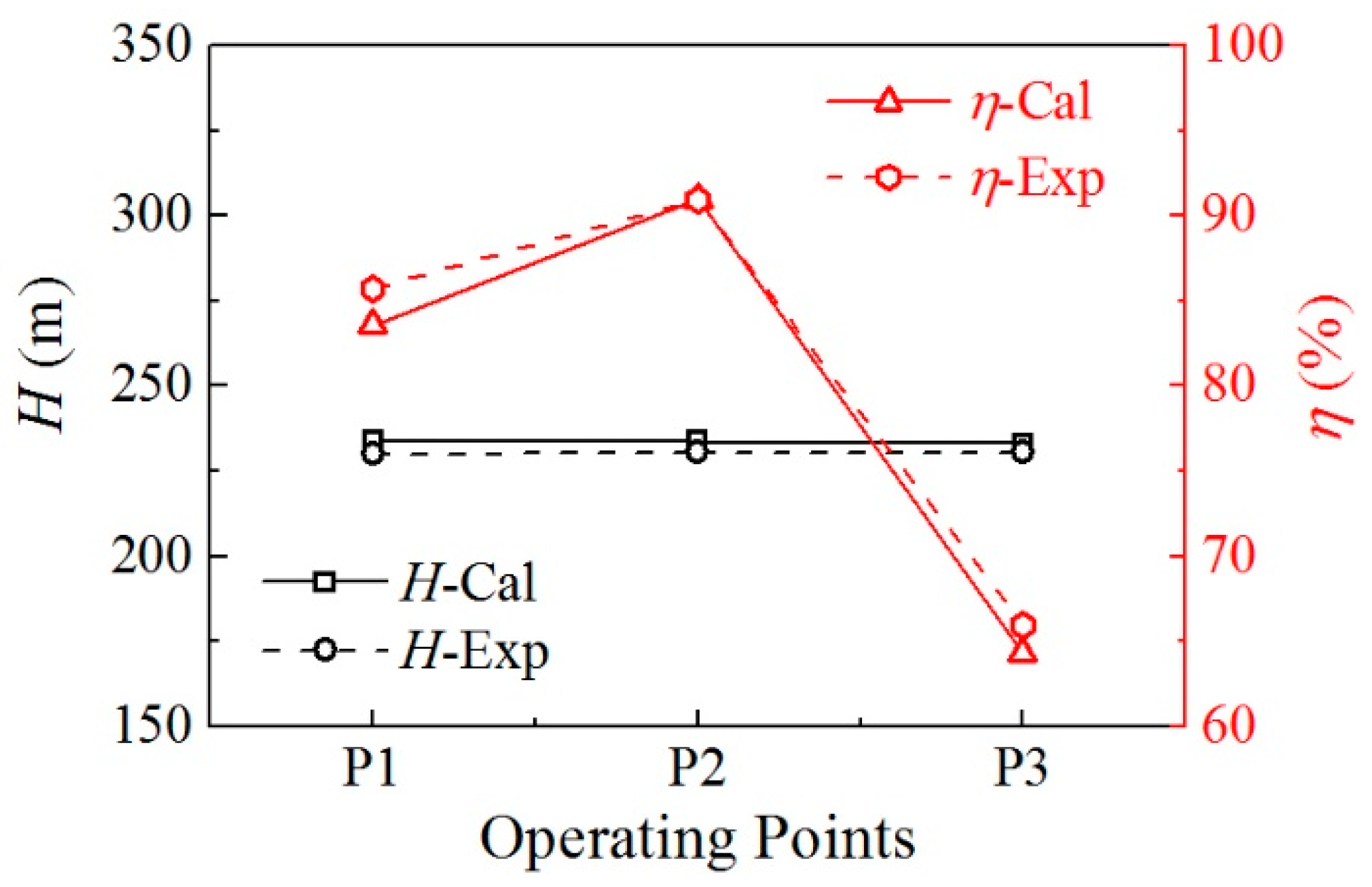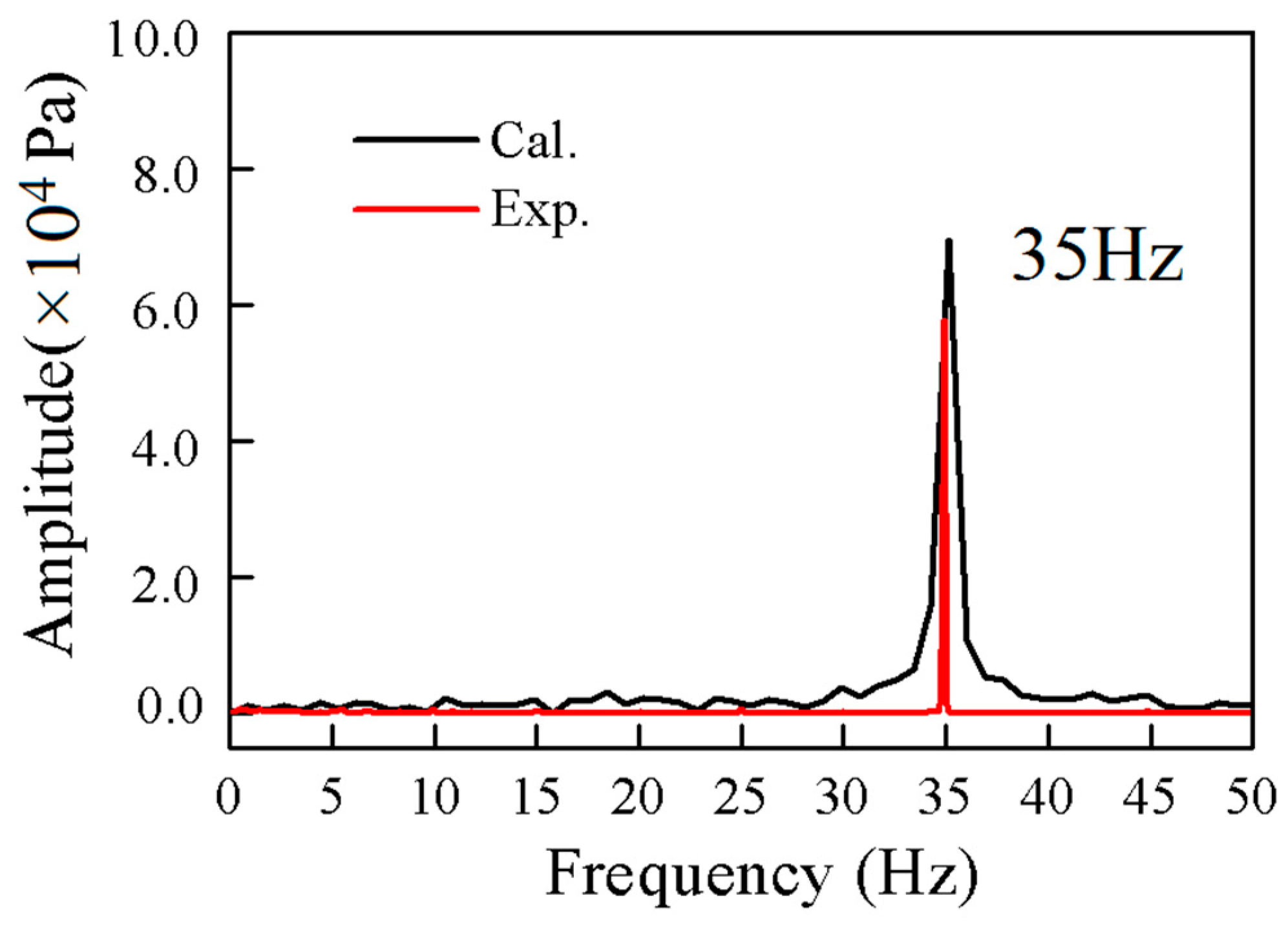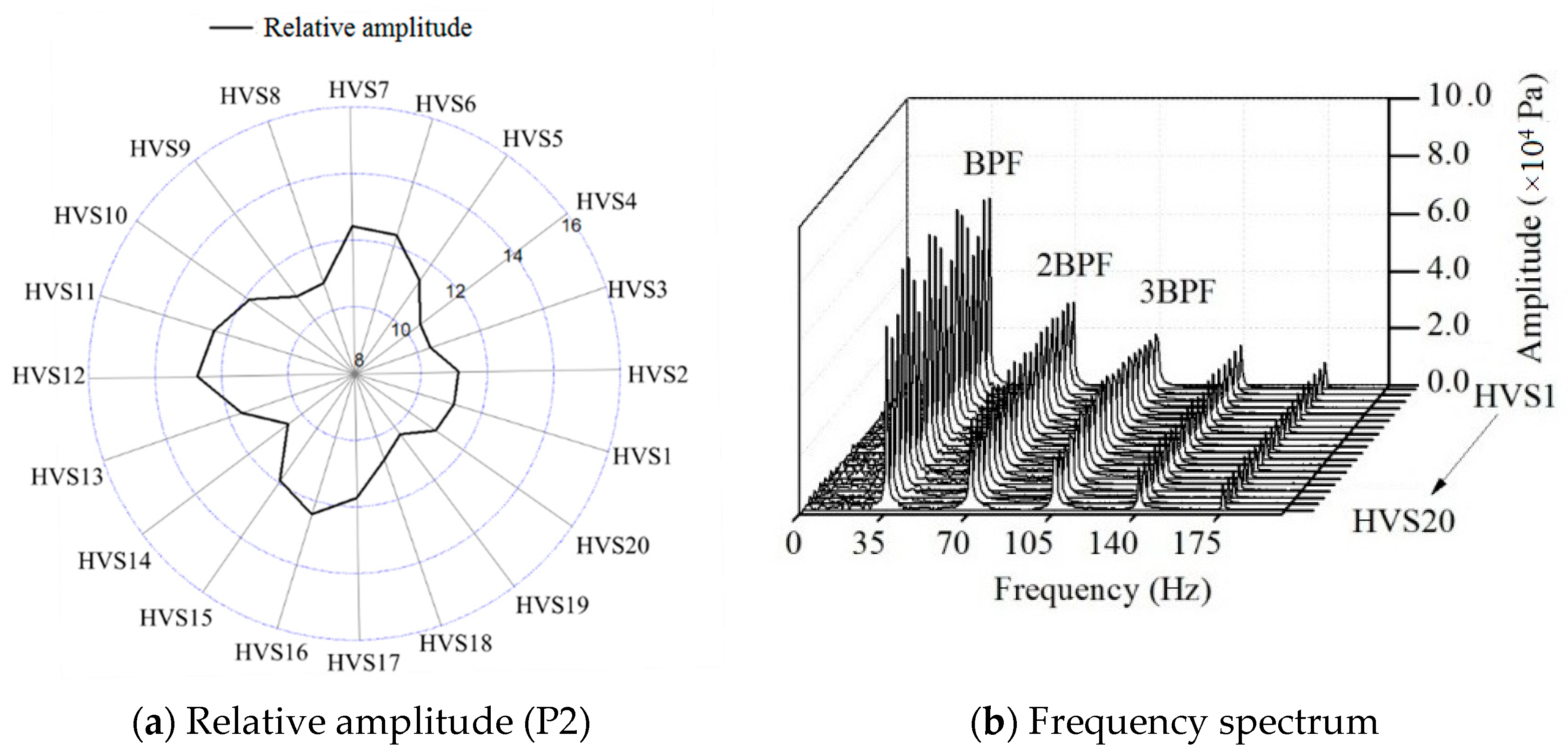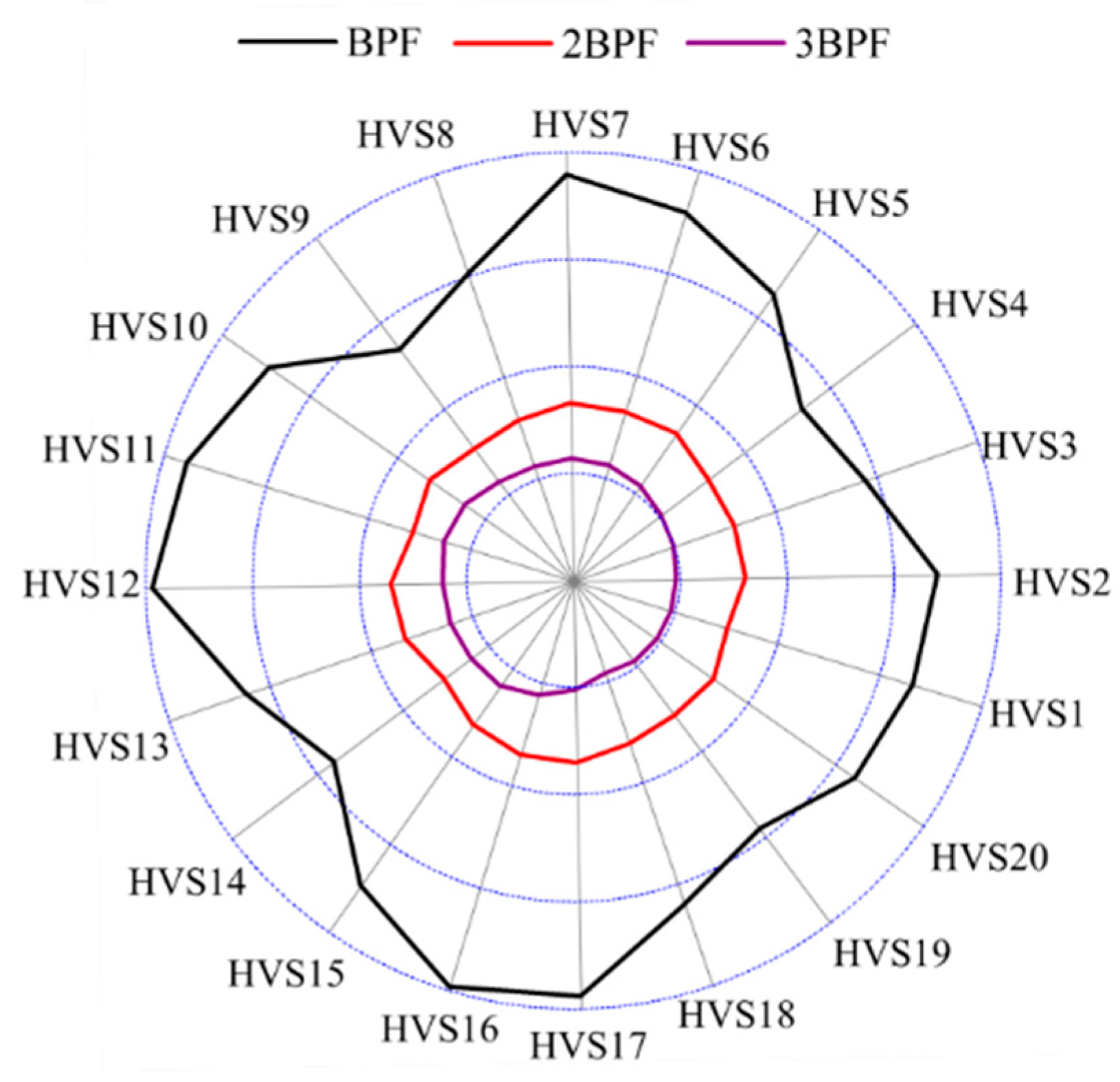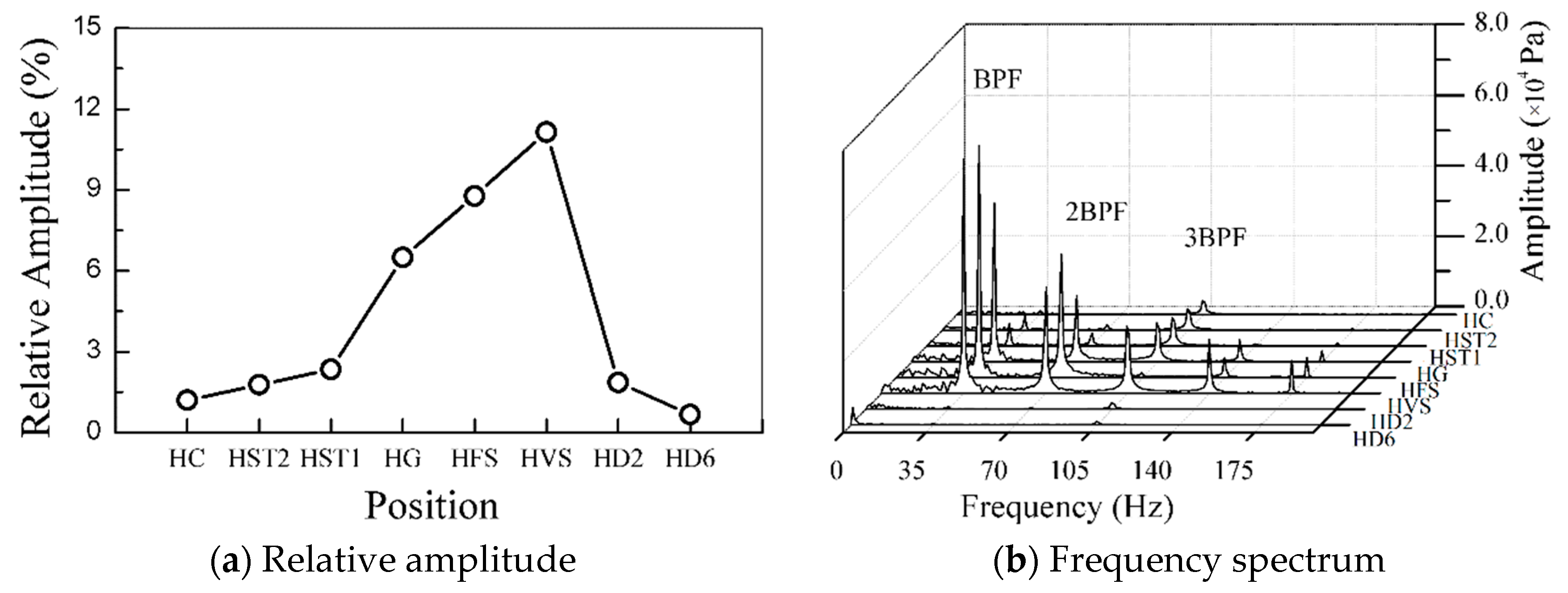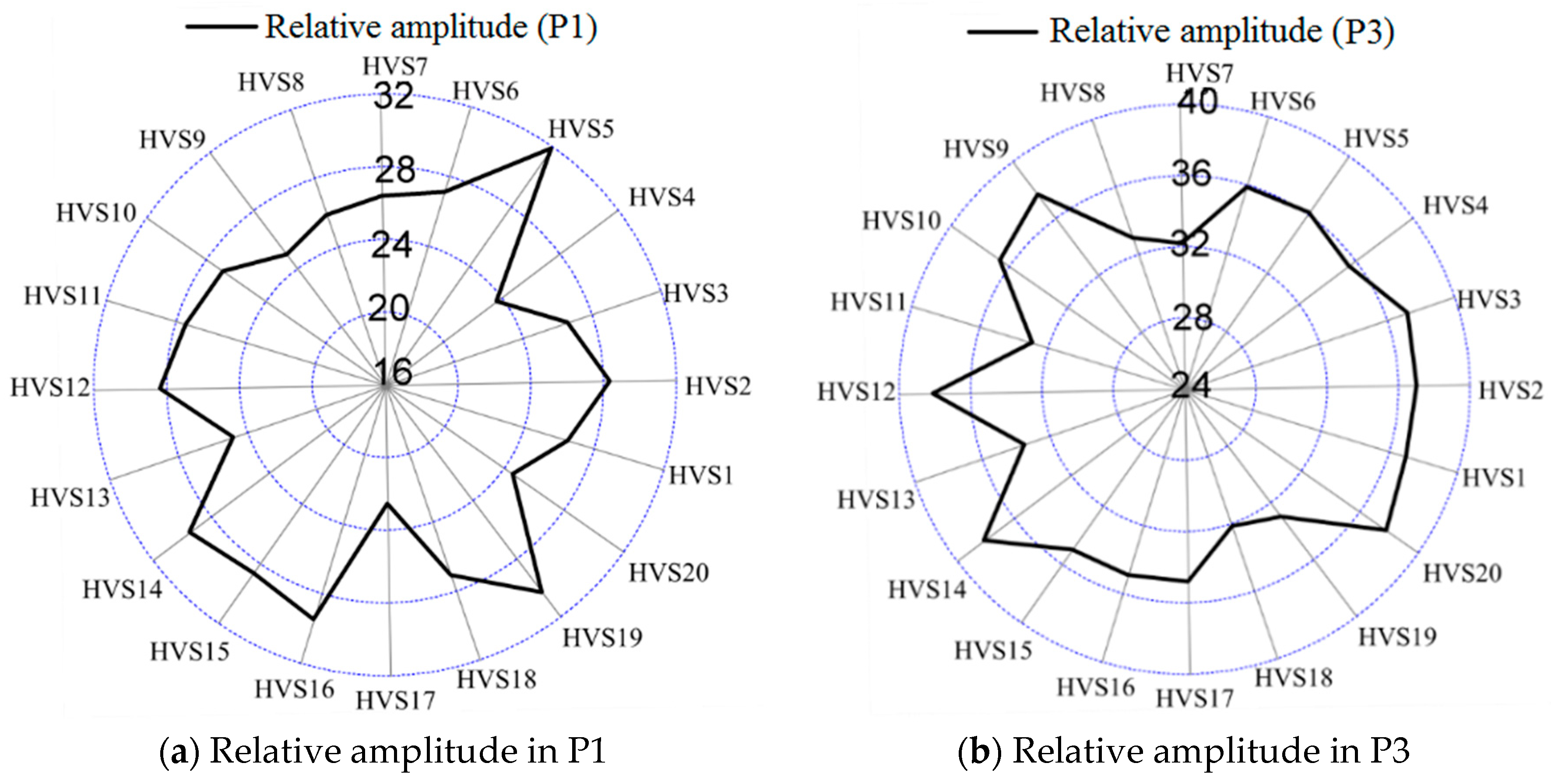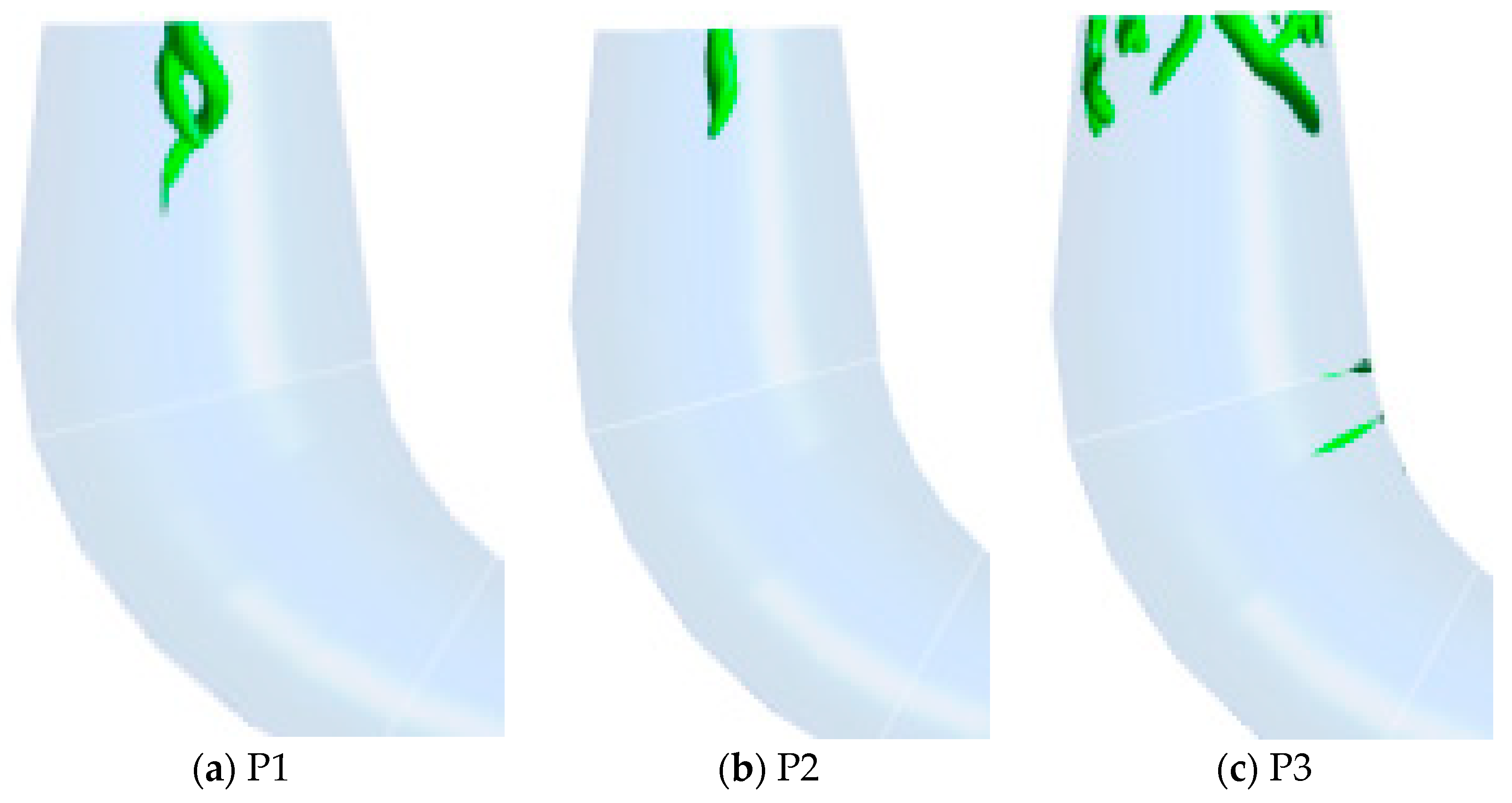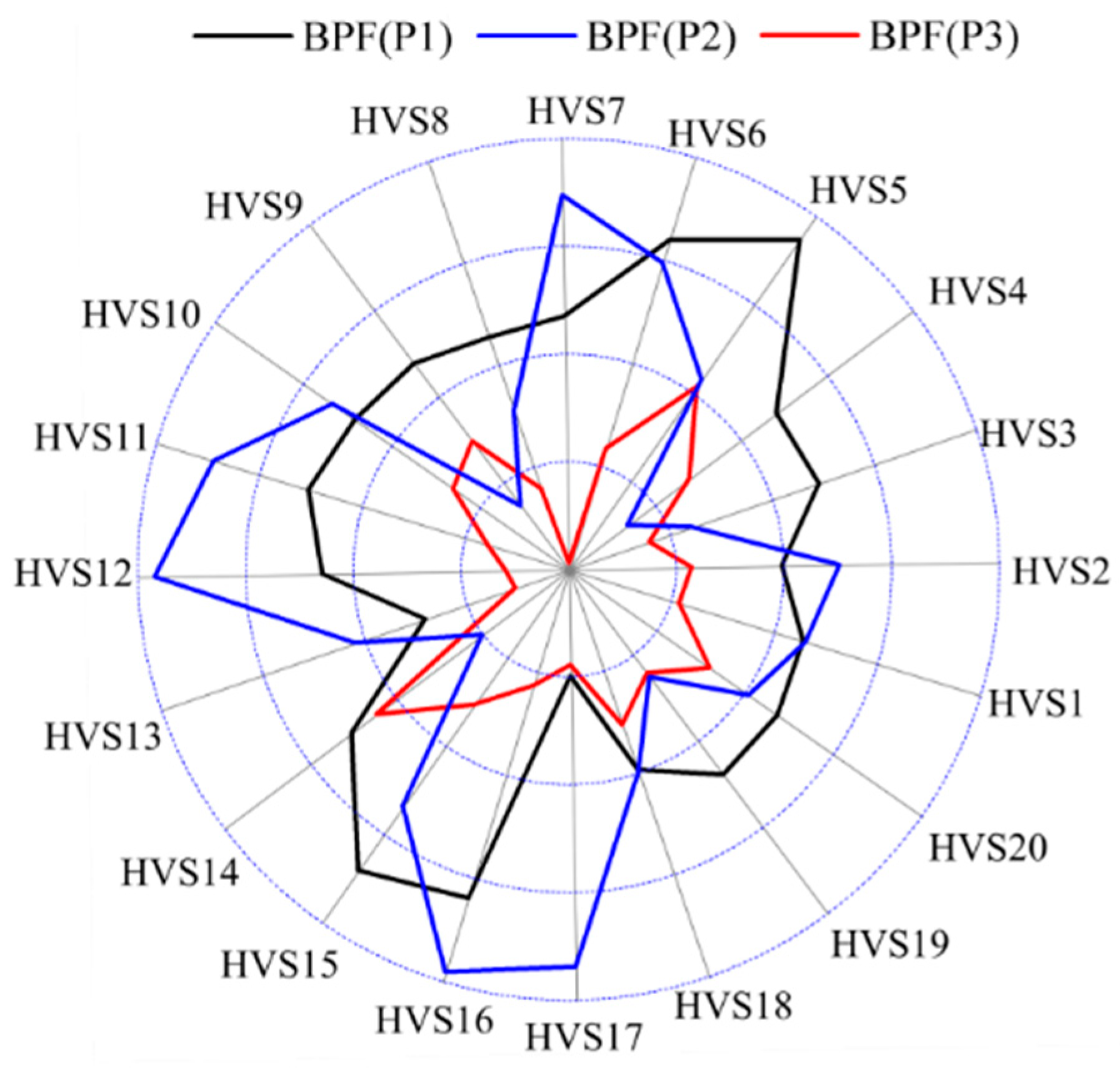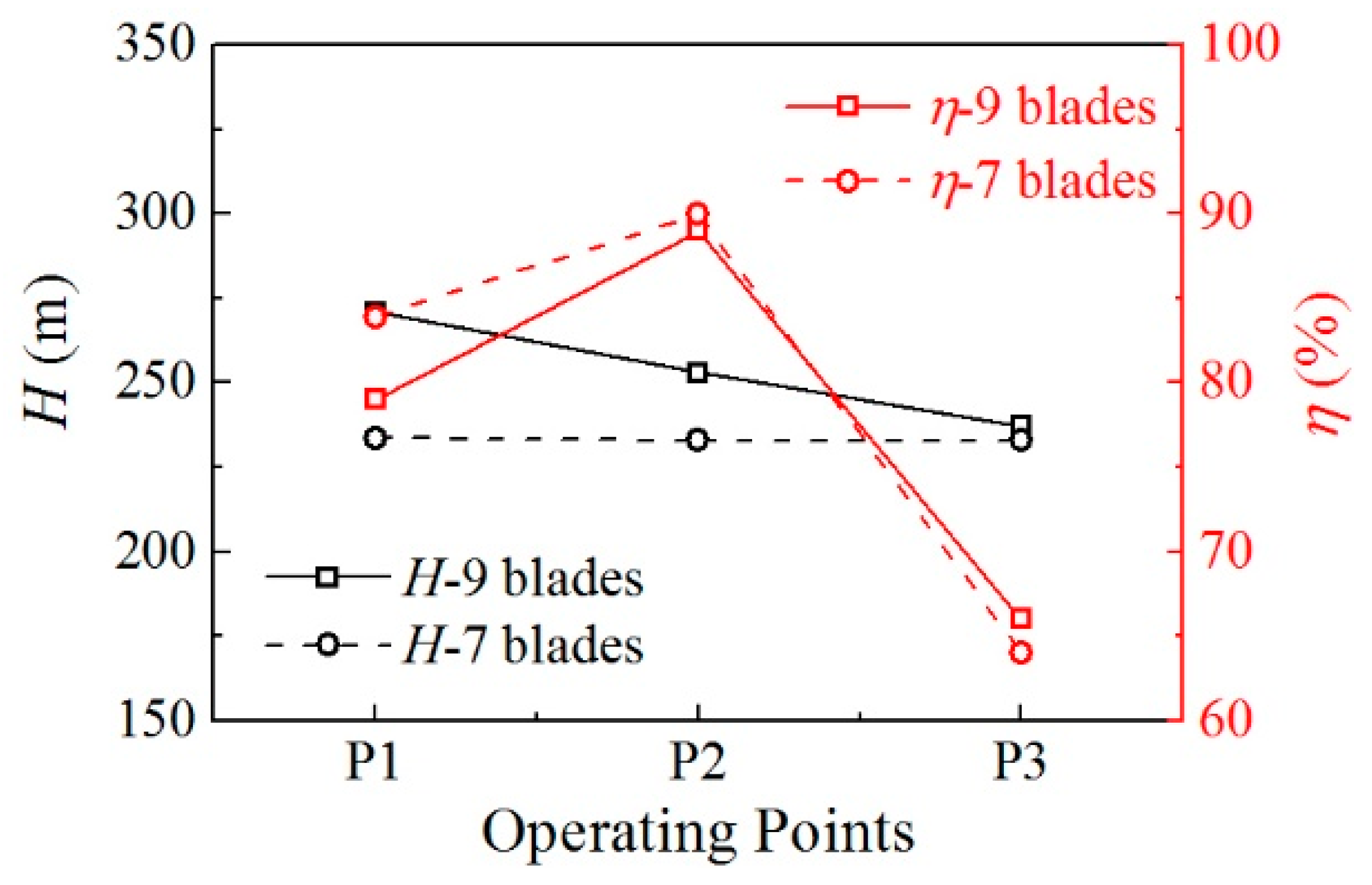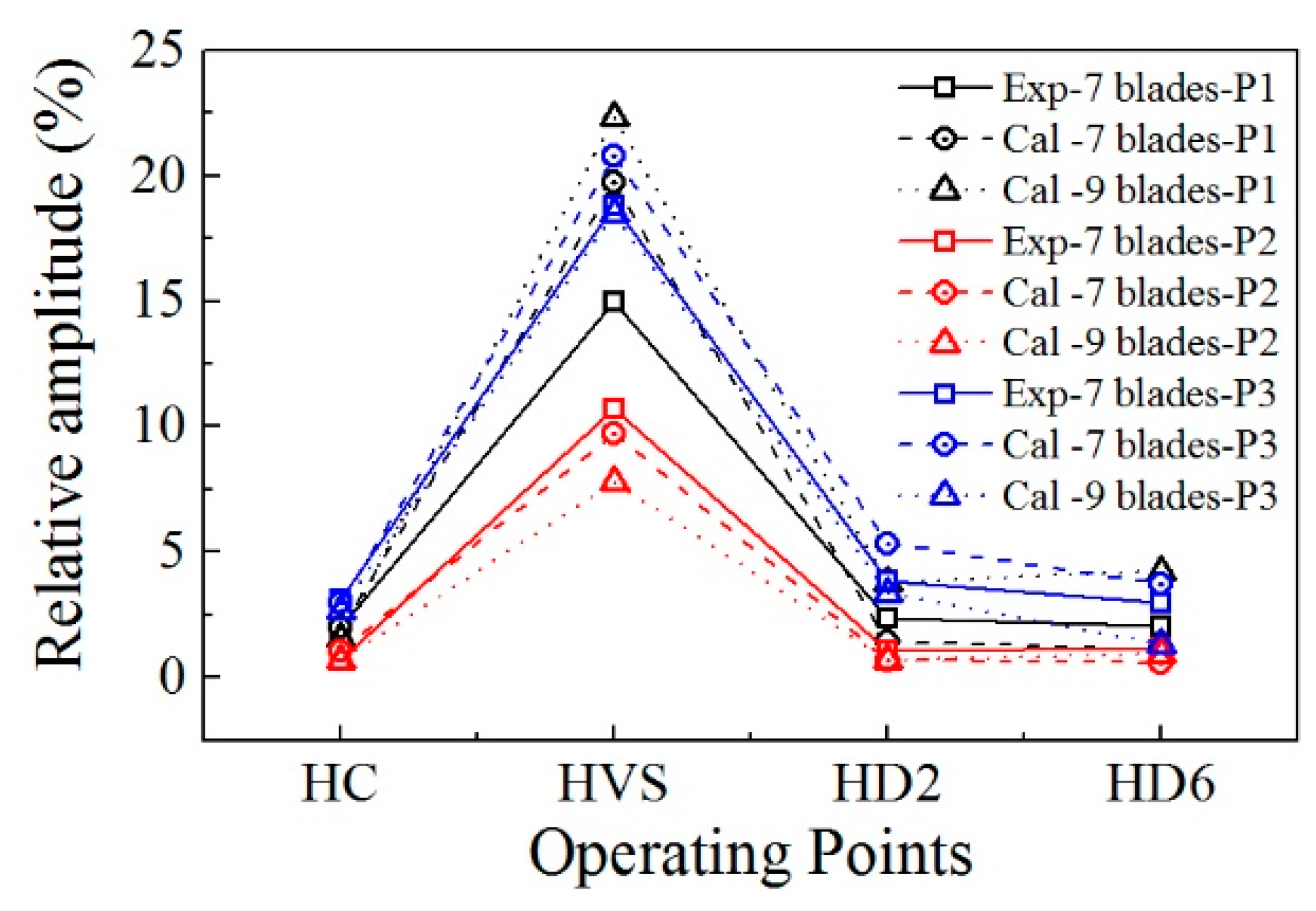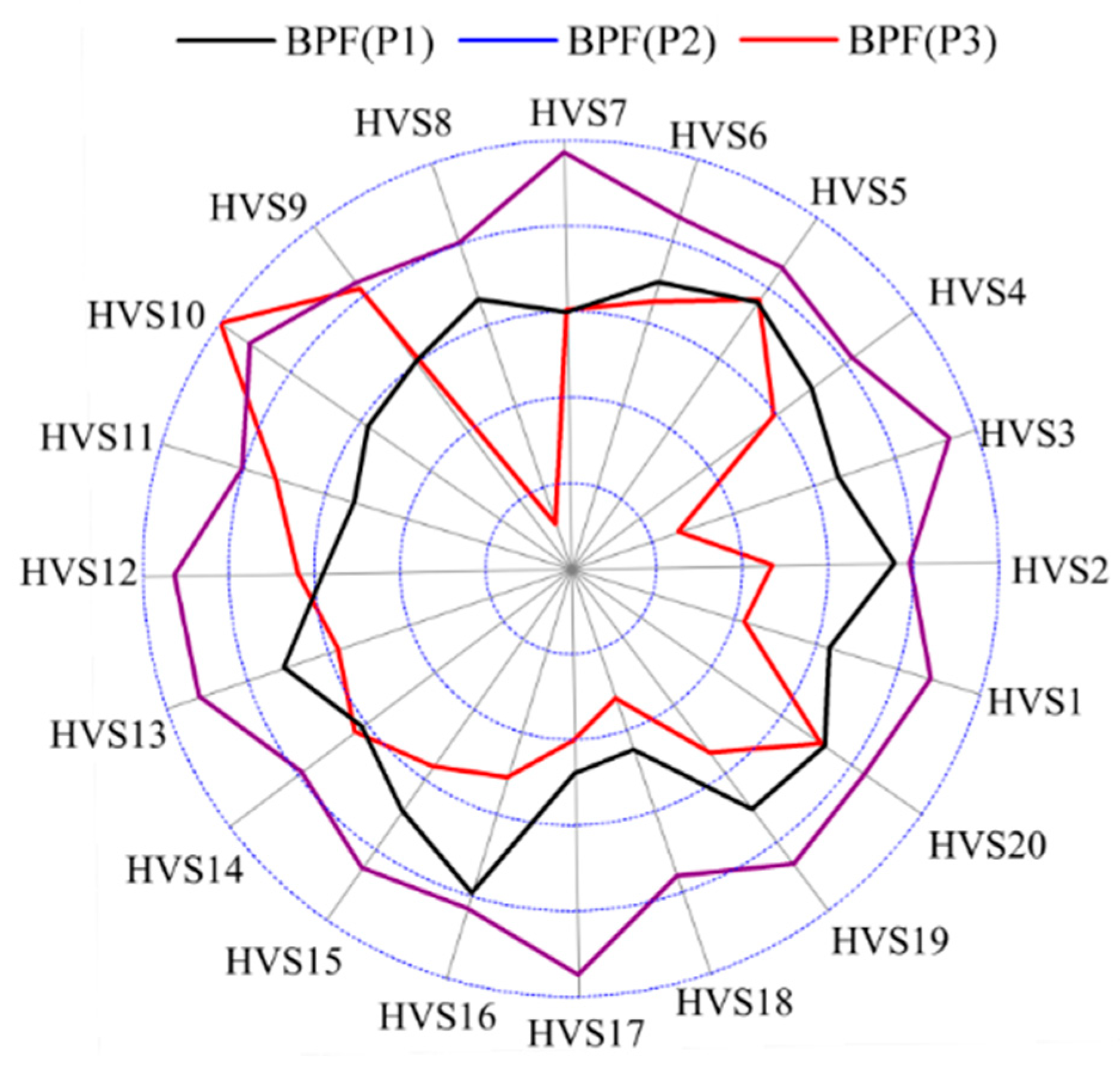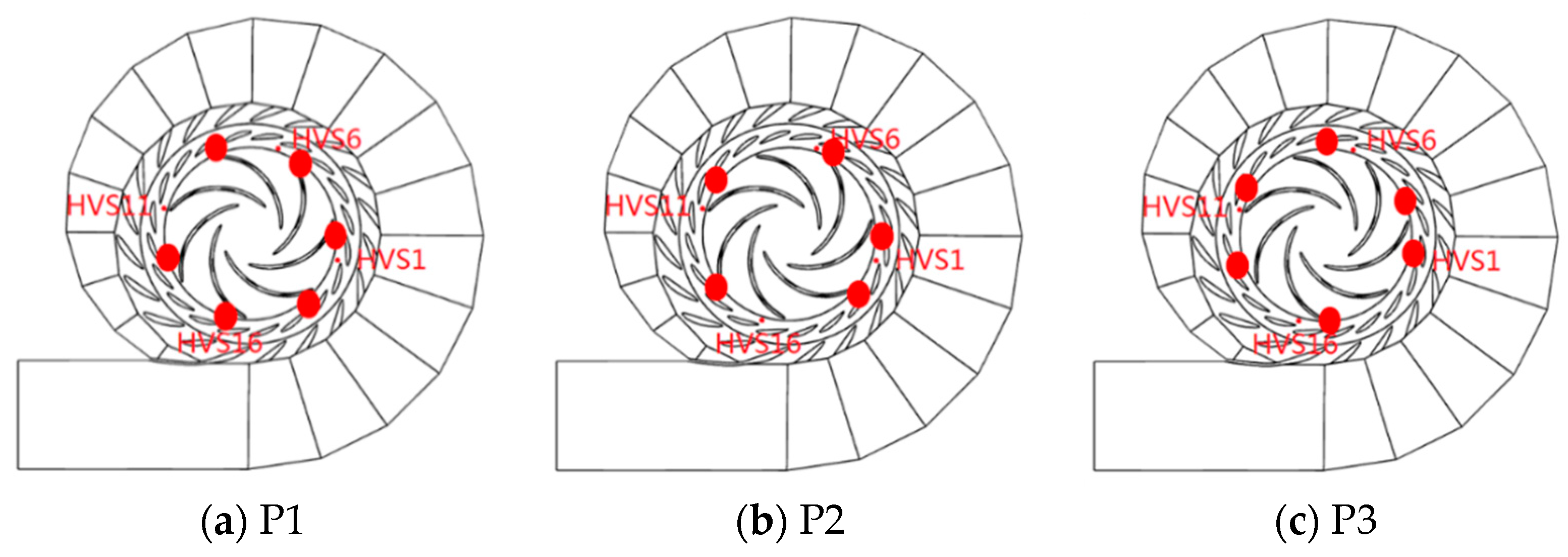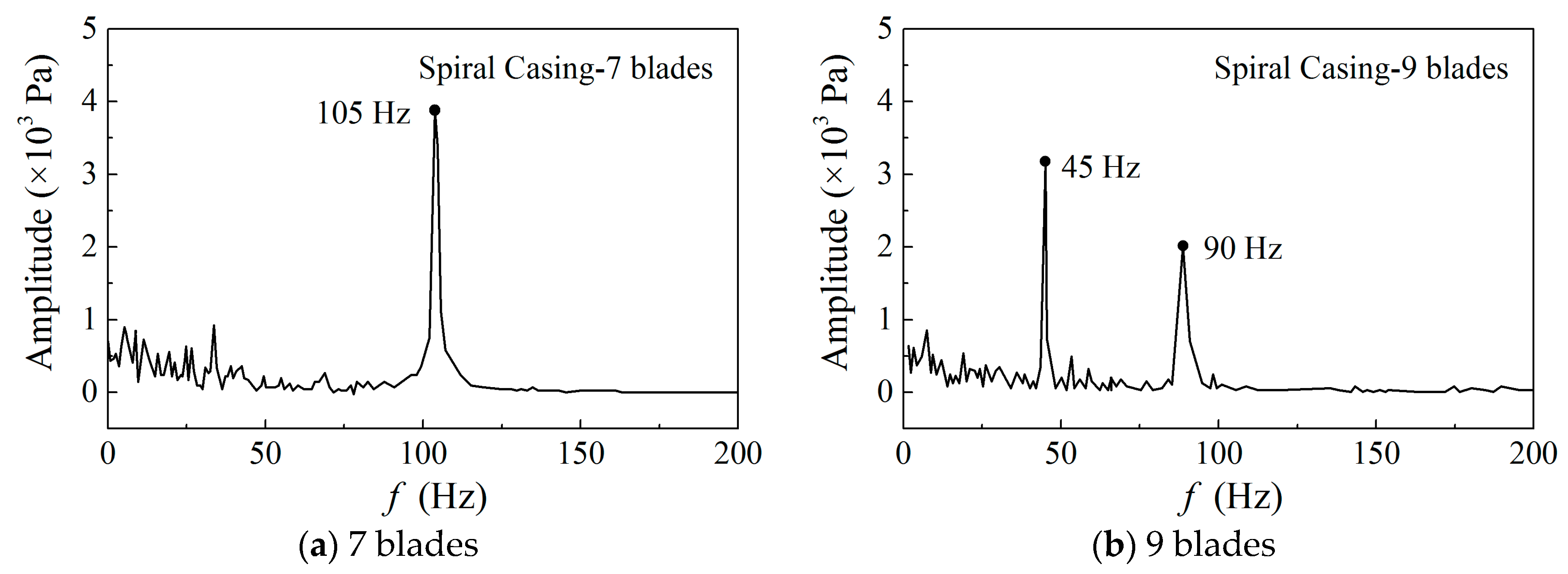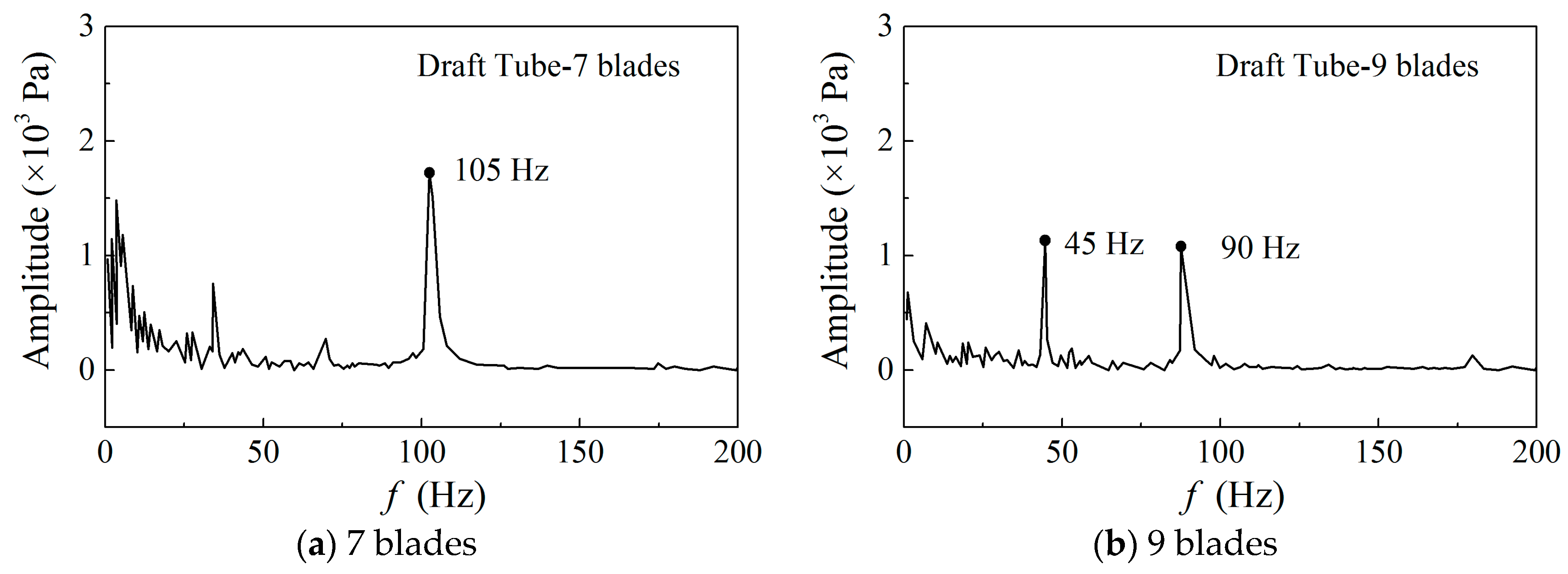1. Introduction
Pumped storage power plants (PSPPs) have rapidly developed in recent years to balance the variation of loads, which is induced by the large investment of renewable energies (such as solar energy and wind energy) in the power grid [
1,
2]. Hence, the current of development of PSPPs trends toward a higher specific speed, a higher head, and a large capacity [
3,
4]. As a consequence, many technical issues arise in the safe and stable operations of pump-turbines, i.e., the key hydraulic parts of PSPPs. Among these issues, hydraulic instabilities of pump-turbines are found as one of the most influential ones, which is believed to be mainly originated from high pressure fluctuations in the hydraulic components [
5,
6]. Hence, the characteristics of pressure fluctuations and the influences of the vital parameters (number of runner blades etc.) on pressure fluctuations are of great interest in engineering practice.
A reference survey shows that, a large number of experimental and numerical studies have been carried out on the generation mechanism and characteristics of pressure fluctuations in pump-turbines. It has been concluded that the pressure fluctuations mainly originate from rotor—stator interaction (RSI) in the vaneless space between guide vanes and runner blades [
7], vortex rope in the draft tube [
8], and vortex motion in the stay/guide vanes [
9,
10].
It is shown that most studies have been performed on model pump-turbines. For examples: Liu et al. [
11] has studied the pressure fluctuations in the transient process of a pump-turbine in turbine mode, with discussions of the influence of misaligned guide vanes (MGV). Li et al. [
12] found that the rotation of Dean Vortices in the draft tube induced strong low-frequency pressure fluctuations under the large partial operating conditions of a model pump-turbine in pump mode. In other studies, transient simulations in both turbine and pump modes of model pump-turbines have been carried out, and the variation of pressure fluctuations in the transient processes have been obtained [
3,
13,
14]. Ran et al. [
15] experimentally studied the pressure fluctuations in a model pump-turbine at large partial flow conditions, and showed an increase on the amplitudes of the pressure fluctuations against stable operating conditions, which were caused by the rotating stalls in the guide vane region (0.2
fn). Yang et al. [
16] performed experimental studies on the pressure characteristics in the pump mode of a low specific speed pump-turbine, and they concluded that high-amplitude pressure fluctuation comes from the rotating stall through the spectral analysis of pressure–time series just as well as by high-speed flow visualizations.
Additionally, the pressure fluctuation propagation of a pump-turbine in pump mode was analyzed by Guo et al. [
17]. It was concluded that the pressure fluctuation along the passage direction was mainly affected by the interaction between the runner and vanes. Hence, the selection of the number of runner blades is vital. The influence of the distributor pitch diameter on pressure fluctuations in a pump-turbine was discussed by Sun et al. [
18]. Analysis showed that the position of the guide vanes had an obvious influence in the frequency characteristics of pressure fluctuation induced by RSI, but minor influence in the amplitude.
In the prototype pump-turbines, the studies on pressure fluctuations through the experimental and numerical methods are rather limited. Experiments in prototype pump-turbines are difficult to be carried out. And the numerical simulations are much more difficult than that in the model pump-turbines due to the larger size of geometry.
With respect to the experiments on prototype pump-turbines, Zhang et al. [
19] studied the characteristics of pressure fluctuations in a prototype pump-turbine with a wide range of load conditions. According to the characteristics of pressure fluctuations, the investigated load range was divided into three regions. In the first region with low load, the amplitude of pressure fluctuations is the highest, which comes from rotor-stator interaction in the vanless space. In the second region with medium low load, the amplitude of pressure fluctuations is less prominent, which is caused by the swirling vortex rope in the draft tube. In the third region with high load, the amplitude of pressure fluctuations is quietly limited, which mainly is originated from the rotor-stator interaction.
For numerical simulations of prototype pump-turbines, Liu et al. [
20] carried out a 3D transient simulation of the power failure process. It was shown that pressure fluctuations increase when the pump-turbine was operating in pump-braking mode. Chen et al. [
21] simulated the starting transient process in a turbine model of a prototype pump-turbine. Li et al. [
22] performed a 3D transient simulation of a prototype pump-turbine during normal turbine shutdown. Xiao et al. [
23] discussed the effect of MGV on pressure fluctuations in a prototype turbine.
Many studies have revealed that the highest pressure fluctuations occur in the vaneless space of the pump-turbines, which were induced by RSI [
24]. To better understand the generation mechanism of RSI, Ruchonnet et al. [
25] carried out a one-dimensional numerical simulation to investigate the hydroacoustic part of RSI. The numerical results show that there are several RSI patterns of the pressure fluctuations, which result from the rotor-stator excitation. Nicolet et al. [
26] performed similar work and studied the effect of the number of runner blades and the thickness of guide vanes on RSI. The results reveal that the number of blades has an obvious influence on the first dominant frequency in the vaneless space.
From the above literature review, it can be seen that the distribution of pressure fluctuation in prototype pump-turbines in turbine mode has not been clear. Furthermore, there are no studies about the effect of the number of runner blades on the characteristics of pressure fluctuations. Hence, in the present study, 3D numerical simulations were performed using the SST k-ω turbulence model to investigate the distribution of pressure fluctuations in a prototype pump-turbine in turbine mode with different numbers of runner blades. Firstly, the numerical accuracy of the simulations was validated using the available experimental data. The distribution of the pressure fluctuation along the flow path and in the circumferential directions was analyzed. Then, the influence of mass flow rate on the pressure fluctuation was discussed. Finally, the influences of the number of runner blades were studied. The number of runner blades is usually 7 or 9 in the engineering application. The original runner in this article is the one with 7 blades, while it was modified by adding 2 blade profiles in order to have a runner with 9 blades. The hydraulic profiles of the added blades were the same as the 7 existing blades. Several operating points in turbine mode were studied to find out the influence of the number of runner blades on pressure fluctuations.
